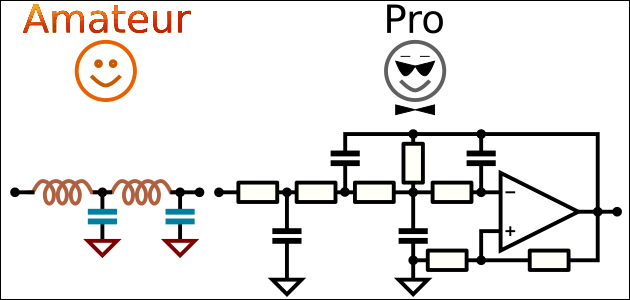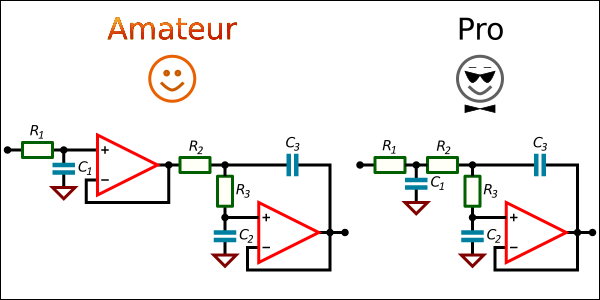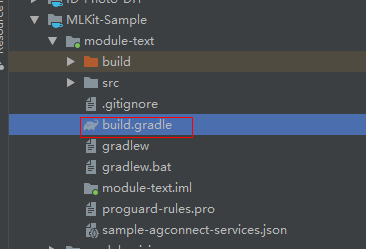
In this article I will talk about my attempt to create flexible, compact and beautiful modular prototyping framework

For those who is not all thumbs

In this article I will talk about my attempt to create flexible, compact and beautiful modular prototyping framework

The sound of rock music, in particular of hard rock and heavy metal, is largely based on a specially distorted guitar sound, for which electronic “distortion” devices, tube amplifiers in “overloaded” mode, computers with appropriate software and digital processors are used. increasingly using neural network algorithms.
The distorted sound of electric guitars began to gain popularity around the 1960s. Since that time, the sound of overloaded tube amplifiers, connected to powerful dedicated guitar speakers with large dedicated speakers, has been considered the benchmark in rock music. But tube amplifiers were relatively expensive and inconvenient to operate. Therefore, semiconductor distortion devices were developed.
At that time, the electrical circuitry of distortion devices was relatively simple and the signal output from their output only vaguely resembled the sound of an overloaded tube amplifier. Nevertheless, it was still somewhat similar to the “sound of a lamp” and this provided a powerful incentive for designers of analog semiconductor distortion circuits to continue their research, complicate circuits and propose new circuit solutions. The heyday of analog solid-state distortion was around 1995-2010. The most popular were electrical circuit diagrams like those shown in the figure below.

LC ladder component values can have different values for the same transfer function. Published tables have only one set. Why?

SEPIC-Ćuk split-rail converter can be used to make positive and negative supplies from a single input voltage for relatively well-matched loads like operational amplifiers.
Transient models are time consuming. Average models reduce modeling time drastically.
The PWM switch average models for current- and voltage-mode are described in details in Christophe Basso’s book “Switch-Mode Power Supplies, Second Edition: SPICE Simulations and Practical Designs”. Using of these models for SEPIC and Ćuk converters is also shown.
This text shows how to use the PWM switch average model to design a split-rail SEPIC-Ćuk converter.

Knowing parameters of small-signal control-to-output transfer functions makes it easier for engineers to design compensation networks of DC/DC converters. The equations for SEPIC can be found in different works and Application Notes, but there are differences. A work has been done to solve this problem.
Simplified design equations for SEPIC with Current Mode control (CM) in Continuous Conduction Mode (CCM) suitable for practical design of compensation networks are shown.

As already described in the previous article, in the process of reworking the DSO138 oscilloscope toy, the idea arose in the DSO303 firmware at some point to try to double the maximum sampling frequency to achieve scanning times of 500 and 200 nanoseconds per cell. In fact, for the STM32F303, the theoretically maximum achievable sampling rate from the point of view of the ADC input, and this is determined by the minimum opening time of the ADC sampling unit, which in our case is 1.5 clock cycles x (1/72 MHz) = 20.8 nanoseconds, is 48 MSPS (millions of counts per second). However, with the parallel operation of 4 ADCs at 6 MHz, it is possible to achieve only 24 MSPS due to the limited speed of the ADC.
Let's imagine that we are considering correctly-periodic signal, which is also constant, i.e. it does not experience fluctuations in frequency and amplitude over time. Is it possible to somehow digitize it not in one, but in several passes, thereby increasing the effective sampling frequency?

On Ali, an interesting toy – an oscilloscope called DSO138 is sold for a very inexpensive price. It has already gained quite a lot of popularity among electronics lovers, but the parameters of this device, alas, allow it to be more or less fully used only for debugging very low-frequency circuits. Actually, it is not positioned as a tool, but rather as a DIY-kit for novice electronics engineers.
This "toy" oscilloscope is assembled on the STM32F103 microcontroller, and with a fairly competent circuit design of the digital part, the presence of a fairly decent 320X240-dot color display, and not the most rotten analog path, everything, alas, is ruined by very weak ADCs on board the 32F103. The claimed band of 200 kHz can be recognized as such only with a very large stretch. Yes, it will show the presence or absence of a signal with such a frequency, but it will not be possible to really look at something beyond this.
At the same time, the 103-series has a slightly more powerful brother - the STM32F303, it is almost completely compatible with the legs, but it is significantly better in terms of the parameters we are interested in, there are 4 ADCs on board with a conversion frequency of 5 MHz (6 MHz with a 10-bit resolution). In this scenario, if you use all 4 ADCs in parallel with a 10-bit resolution, you can get a effective resolution of up to an honest 24 MSPS (millions of samples per second). The microcontroller is also inexpensive; you can easily find it on the same Ali for very reasonable money again. It is clear that the idea to change the microcontroller arose almost immediately after I tried this DSO138.
At the same time, if upgraded the toy can turn out to be a completely full-fledged tool that even professionals, not just novice amateurs, could already use. With these thoughts in mind, I decided to try to do something with a Chinese toy in my free time.


Hackathons could be very intimidating and stressful. The key to getting better is doing simple projects. In this article, we will look at an example of a web app that can be used for sharpening your skills when you prepare for a hackathon. We will use a powerful Google API based on Machine Learning and apply the following technologies: ASP.NET, HTML, Docker, Heroku, and Git.





In 2013 Canonical tried to crowdfund Ubuntu Edge smartphone. Its main feature could be the ability to use the smartphone as a full-fledged PС. Unfortunatly, the crowdfunding campaign did not accumulate enough money, so a dream of having a universal device remained to be the dream.
I've been searching for universality, too, on the software side, not the hardware one. Today I can confidently say I found the necessary combination: Git and JavaScript.
As you know, I have already described the benefits of browser applications (nCKOB static site generator) and the benefits of using Git instead of yet another back-end with API (GitBudget to track personal spendings). Once GitBudget was out, I spent the remaining 2020 to build a system allowing one to create browser applications right inside browsers. GitJS is the name of that system.

When we think about robots, the first thing that comes to mind are robotic vacuum cleaners. The reason is simple: they are the most "solid" demonstration of success of "consumer" robotics. So making one sounds like a good idea... at first.
But isn't it a bit counter productive - to build something that popular, something we can buy in a store at a commodity (small) price? Should we build something similar, but NOT a vacuum cleaner? Something like... a floor washer, perhaps? Yes, a robotic floor washer.
In this tutorial I am going to build a fully working prototype of a robotic floor washer. By "fully working" I mean that it is going to wash floor, instead of moving dirt around like most robotic "moppers" do. While by "prototype" I mean it is going to be the first step towards production-ready unit, but not a production-ready unit yet. Let me explain.
First of all, it is not going to be THAT solid. You can grab a robotic vacuum cleaner that you got from the store by any part, including wheels and bumper and lift it. It will not fall apart. Ours probably will. The reason is, to make a device "mechanically solid" is a separate task, and if we focus on it, then "robotic" tasks will become more difficult to achieve. So we are going to do what engineers usually do: first they build C3PO without the outside body, wires everywhere and so on. And only then they put a gold-covered outfit on it.





Information